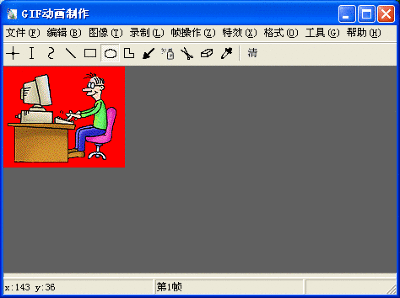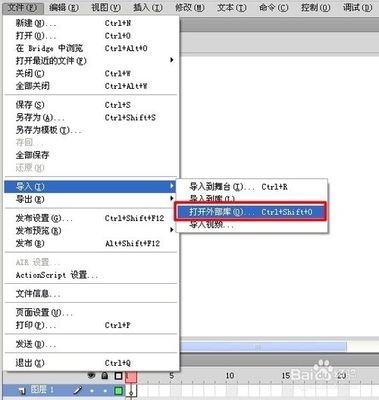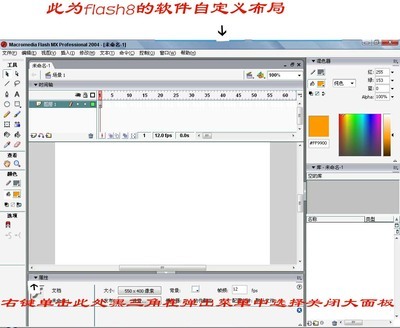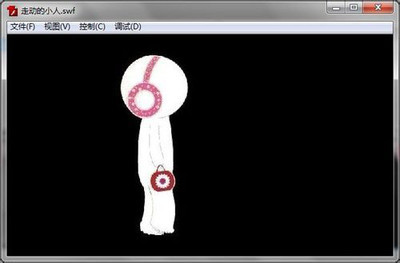What is goodtiming?
Timing isthe part of animation which gives meaning to movement.Movement can easily be achieved by drawing the same thing in twodifferent positions and inserting a number of other drawingsbetween the two. The result on the screen will be movement, but itwill not be animation. In nature, things do not just move.Newton's first law of motion stated that things do not move unlessa force acts upon them. So in animation the movement itself is ofsecondary importance; the vital factor is how the action expressesthe underlying causes of the movement. With inanimate objects thesecauses may be natural forces, mainly gravity. With livingcharacters the same external forces can cause movement, plus thecontractions of muscles but, more importantly, there are theunderlying will, mood, instincts and so on of the character who ismoving.
In order toanimate a character from A to B, the forces which are operating toproduce the movement must be considered. Firstly, gravity tends topull the character down towards the ground. Secondly, his body isbuilt and jointed in a certain way and is acted on by a certainarrangement of muscles which tend to work against gravity. Thirdly,there is the psychological reason or motivation for hisaction—whether he is dodging a blow, welcoming a guest orthreatening someone with a revolver.
A live actor faced with these problems moves hismuscles and limbs and deals with gravity automatically from habit,and so can concentrate on acting. An animator has to worry aboutmaking his flat, weightless drawings move like solid, heavyobjects, as well as making them act in a convincing way. In boththese aspects of animation, timing is of primaryimportance.
Part of the working storyboard of The Story ofthe Bible by Halas and Batchelor. At this stage the directorworks out the smooth visual flow of the film, the editing, cameramovements and so on. All these elements combine to tell the storyin an interesting way.
The storyboard
A smoothvisual flow is the major objective in any film, especially if it isan animated one. Good continuity depends on co-ordinating theaction of the character, choreography, scene changes and cameramovement. All these different aspects cannot be considered inisolation. They must work together to put across a story point.Furthermore the right emphasis on such planning, including thebehaviour of the character, must also be realised.
The storyboardshould serve as a blueprint for any film project and as the firstvisual impression of the film. It is at this stage that the majordecisions are taken as far as the film's content is concerned. Itis generally accepted that no production should proceed until asatisfactory storyboard is achieved and most of the creative andtechnical problems which may arise during the film's productionhave been considered.
There is nostrict rule as to how many sketches are required for a film. Itdepends on the type, character and content of the project. A roughguideline is approximately 100 storyboard sketches for each minuteof film. If, however, a film is technically complex, the number ofsketches could double. For a TV commercial, more sketches areproduced as a rule because there are usually more scene changes andmore action than in longer films.
Responsibility of thedirector
Thedirector is responsible for decisions regarding the overall pacingand planning of the whole story or a particular sequence ofit.
This caninvolve sequences of several minutes' duration or of only a fewseconds. He must also decide how these sequences should beorganised into scenes.
How long shouldeach scene be? What should be the pace of the action in the scene?What should be the pace of the action in order to hold the interestof the audience? How can ideas in the story best be put over to theaudience? These are the problems the director must solve. Goingdown to yet shorter periods of time, to individual actions, theresponsibility is shared between the director and the animator. Butthe director still has overall control.
The animatorshould, however, add some ideas of his own as to how certaineffects can be achieved—just as an actor would in live action. Thesmallest units—individual drawings and frames—are almost entirelythe animator's province, and this is where his particular skilllies. How does a ball bounce? How does a character react insurprise, or snap his fingers? These are problems the animator mustsolve by his feeling for and knowledge of the subject.
An animatedfilm usually takes a long time to produce. During this period it isessential that the director should keep a constant check on how theproduction is progressing and how closely the original timing andconcept have been followed.
Most animatedfilms are made to a predetermined length. A TV commercial must bean exact number of frames and a longer film will probably have tofit between fairly narrow limits. One of the director's problems isto fit the action to the time available.
First dividethe story into sections or sequences of convenient lengths. Runthrough each section mentally as many times as necessary to absorball the important story points. Then run through each sectionagain, timing it mentally with a stop watch. Add up all the timingsto give an overall total. This is sure to be more or less wide ofthe mark. If it is fairly close, see whether a sequence can beadjusted to bring the total about right. If it is much tooshort, more business must be invented to fill the time available.If it is much too long, maybe a whole sequence must beomitted.
The basic unit of time in animation
The basis of timing in animation is the fixedprojection speed of 24 frames per second (fps) for film and video.While other projection speeds have been used in the past thestandard projection rate for film of all formats—16mm, 35mm and70mm remains 24 fps. On television and video this becomes 25 framesper second (PAL) or 30 fps (NTSC), but the difference is usuallyimperceptible.
The thing to remember is that if an action on thescreen takes one second it covers 24 frames of film, and if ittakes half a second it covers 12 frames and so on.
24 frames of film go through the projector everysecond (25 on television). This fixed number of frames provides thebasis on which all actions are planned and timed by thedirector.
For single frame animation, where one drawing isdone for each frame, a second of action needs 24 drawings. If thesame action is animated on double frames, where each drawing isphotographed twice in succession, 12 drawings are necessary out thenumber of frames and hence the speed of the action would be thesame in both cases.
Whatever the mood or pace of the action thatappears on the screen, whether it be a frantic chase or a romanticlove scene, all timing calculations must be based on the fact thatthe projector continues to hammer away at its constant projectionrate. That is—24 fps for film and either 25 fps or 30 fps fortelevision and video depending on format. The unit of time withinwhich an animator works is, therefore, 1/24 sec, 1/25 sec or 1/30sec and an important part of the skill, which the animator has tolearn is what this specific timing ‘feels’ like on screen. Withpractice the animator also learns what multiples of this unit looklike—3 frames, 8 frames, 12 frames and so on.
Timing on barsheets
When thedirector has given some thought to the overall timing of a film, heproceeds to more detailed timing and puts this down on paper onspecially printed bar sheets. These are much like music manuscriptpaper, with several horizontal lines having spaces for dialogue,sound effects, music and action. He is concerned with timing theaction and this is entered in the spaces very much as music iswritten, but in a kind of animator's shorthand.
The horizontallines of the bar sheet are marked in frames with heavy linesmarking every foot, that is, every 16 frames. The footage divisionson the required number of bar sheets are then numbered for thelength of the film, and the timing of the action is ready to begin.If there is prerecorded music or dialogue to which the action mustfit, this is charted beforehand from the soundtrack and enteredinto the appropriate spaces on the bar sheets.
People havetheir own individual shorthand, but generally a horizontal linemeans a hold, a curve means an action of some sort, a loop meansthe anticipation to an action, a wavy line means a repeat cycle andso on. If an action must take place on a certain frame, this ismarked with a cross on the required frame. The action is alsowritten out verbally with stage directions, repeat animationinstructions and other relevant information.
Beforeproduction of an animated film starts, the director works out thetiming of the film on bar sheets. He decides on scene continuity,the exact length of each scene and what action takes place withinit. He also plans the pace of the storytelling and decides wheretracks, pans, mixes etc, are needed to put the story over in thebest possible way.
Timing on barsheets is an extremely skilled operation. The director needs agreat deal of experience to time out a film mentally before anydrawing is done. When he commits his ideas to paper on the barsheets, he is telling the story in terms of film, that is, cutting,timing and pace (movement).
He must runforwards and backwards through the story many times in his mind,relating the different parts of the story to one another in termsof dramatic flow. At the same time, he must be trying continuallyto judge what the effect will be on an audience who come fresh toit and who see the film through once only.
At thebeginning of the film the director knows what is about to happenbut the audience does not. The timing at the start of a film is,therefore, probably rather slow until the audience has beenintroduced to the location, the characters and the mood of thefilm. Once this has been done the pace may build up to the climaxif it is a short film. If it is a longer film it may build up to aseries of climaxes.
The bar sheetscan also be useful in that having defined the complete continuityof the film, with scene lengths and other information, they canalso serve as the basic reference for the composer, and for theeditor when the final film is assembled.
Part of aproduction breakdown chart. After the director has decided on thetiming, scene continuity and so on, this information is transferredto a chart showing scene numbers, footages, background numbers etc.As scenes are passed out and completed, boxes are shaded in on thischart so that the state of production can be seen at aglance.
(Milisa)
 爱华网
爱华网


